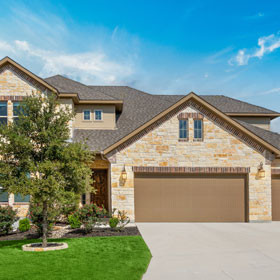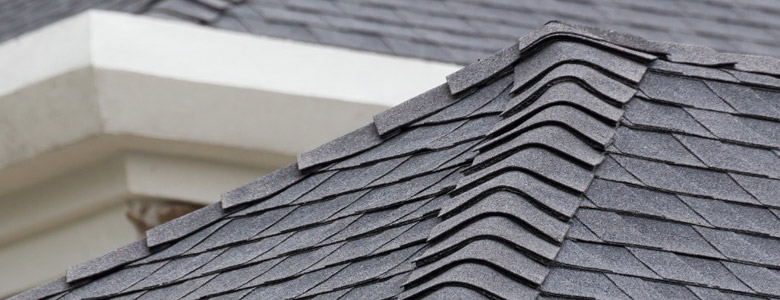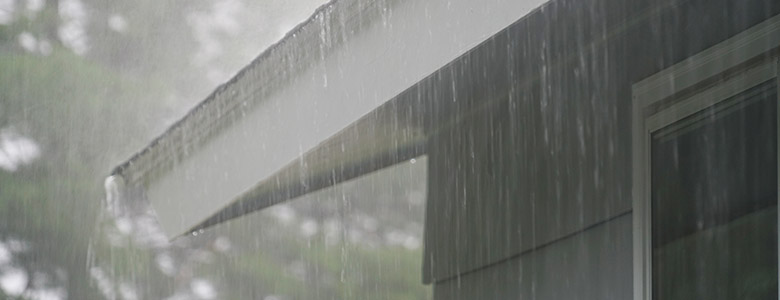How to Choose the Best Roofing Material for Minnesota Homes

Minnesota homeowners face unique challenges when selecting the perfect roofing material. With its harsh winters, heavy snowfall, and fluctuating temperatures, Minnesota's weather demands a roof that can withstand extreme conditions.
So, how do you choose the best roofing material for your home? This blog post from The Best Roofing Company in Minnesota will guide you through the process, addressing key factors such as weather resilience, environmental impact, insurance implications, maintenance requirements, and aesthetic choices.
By the end, you'll have all the information you need to make an informed decision about your next roof!
What Are Popular Roofing Options in Minnesota?
When choosing the right roofing material, aesthetics play a crucial role alongside functionality and durability. The appearance of your roof can dramatically influence your home's curb appeal, contributing to its overall style and character.
Whether you prefer the classic look of wood shingles or the sleek finish of metal roofing, each material offers unique visual benefits that can complement various architectural designs.
Here’s what’s popular in the Twin Cities now.
Versatile Asphalt Shingles
Asphalt shingles offer many colors and styles, making them a versatile choice for many homeowners. They can mimic the look of wood, slate, or tile, providing aesthetic flexibility without the associated costs.
Elegant Slate & Tile
Slate and clay tiles are known for their timeless elegance and durability. Available in various natural tones, they can add a sophisticated touch to any home. However, due to their weight, they come with higher upfront costs and potential structural considerations.

Modern Metal Roofs
Metal roofs have evolved beyond their industrial origins, now available in multiple styles and colors. From standing seam panels to metal shingles designed to mimic traditional roofing materials, metal roofs offer a sleek, modern appearance while providing excellent durability.
How Does Minnesota’s Weather Affect Different Roofing Materials?
Minnesota experiences extreme temperature variations, from frigid winters to hot summers. This range can cause significant stress on roofing materials. Asphalt shingles , for instance, may crack under temperature fluctuations, while Metal roofs can expand and contract, potentially leading to fastener issues.
Understanding how each material handles these conditions is crucial for longevity.
Handling Snow & Ice
Heavy snowfall and ice are common in Minnesota. Roofs must be able to support the weight of snow and prevent ice dams, which can cause leaks and structural damage.
Materials like metal and slate are particularly adept at shedding snow, reducing the risk of accumulation and ice dam formation. In contrast, some materials may require additional underlayment or insulation to handle these conditions effectively.
Moisture Resistance
Moisture resistance is paramount with frequent snowfall and rain. Wood shingles, while aesthetically pleasing, may suffer from rot and require regular treatment.
On the other hand, materials like clay tiles and asphalt shingles generally offer better moisture resistance, although they may still need proper installation and maintenance to prevent leaks.

What are the Environmental Impacts of Various Roofing Materials?
Minnesotans are recognizing the need for sustainability and looking for better solutions in all areas of their lives, including their roof replacement and home improvement projects.
For the eco-conscious homeowner, here are some environmental factors to consider when planning a new roof.
Sustainability & Resource Use
The environmental footprint of roofing materials varies significantly. Eco-friendly options like metal and clay tiles are durable and often recyclable, making them a more sustainable choice.
Conversely, asphalt shingles, while popular, are petroleum-based and contribute to landfill waste when replaced.
Energy Efficiency
Energy-efficient roofs can reduce heating and cooling costs, an important consideration in Minnesota's climate. Materials like metal and certain cool roofing shingles reflect solar heat, keeping homes cooler in the summer and potentially reducing energy bills.
Plus, installing proper insulation and ventilation can enhance the energy efficiency of any roofing material.
Lifecycle Impact
Consider the entire lifecycle of the roofing material, from production to disposal. Metal roofs, for instance, have a longer lifespan and lower replacement frequency, reducing their overall environmental impact.
Meanwhile, materials with shorter lifespans, such as asphalt shingles, may need frequent replacements, increasing their environmental burden over time.

Can Roofing Materials Impact Home Insurance Premiums?
Insurance companies assess the risk associated with different roofing materials when determining premiums. Durable materials like metal and slate often result in lower premiums due to their resistance to extreme weather. Materials prone to damage, like wood shingles, may lead to higher premiums.
Insurance companies also look at fire and impact resistance:
- Fire Resistance: Fire-resistant materials can also influence insurance costs. Metal roofs, for example, are non-combustible and may lower your premium, while wood shingles might increase your risk profile and insurance costs due to their combustibility.
- Impact Resistance: Minnesota is no stranger to hailstorms, so choosing a material with high impact resistance can be beneficial. Some asphalt shingles are designed to be impact-resistant, potentially lowering insurance premiums.
Always check with your insurance provider to understand how different materials affect your policy.
If you notice storm damage on your roof, like dents, granular loss, missing shingles, and more, don’t hesitate to call us for a storm damage inspection. Our team is well-equipped to work with your insurance and help you through the claims process when needed.
How Do Materials Compare in Terms of Maintenance?
Maintenance requirements vary by material. Asphalt shingles and wood shingles generally need regular inspections or more frequent storm damage inspections and occasional repairs to maintain their integrity.
Metal roofs, however, require minimal maintenance, typically only needing periodic checks for loose fasteners or minor repairs.
The lifespan of roofing materials also influences maintenance frequency. Metal and slate roofs can last 50 years or more with proper care, reducing long-term maintenance. In contrast, asphalt shingles may need replacement every 20-30 years, resulting in more frequent maintenance cycles.
The Best Roof Can Be Yours With Our Superior Roofing Services
Choosing the right roofing material for your Minnesota home involves considering various factors, from weather resilience and environmental impact to insurance implications, maintenance needs, and aesthetics.
You don’t have to do it alone. Our experts help you find the right roofing material at the right price. Our partnerships with trusted roofing product manufacturers mean you’ll have access to every material you could want, and you’ll have no doubt of the quality.
Ready to transform your home with the perfect roof? Get a free quote from our experts today, explore your options, and find the best solution for your unique needs! For more information, please give us a call at 612-458-9378 or message us online.